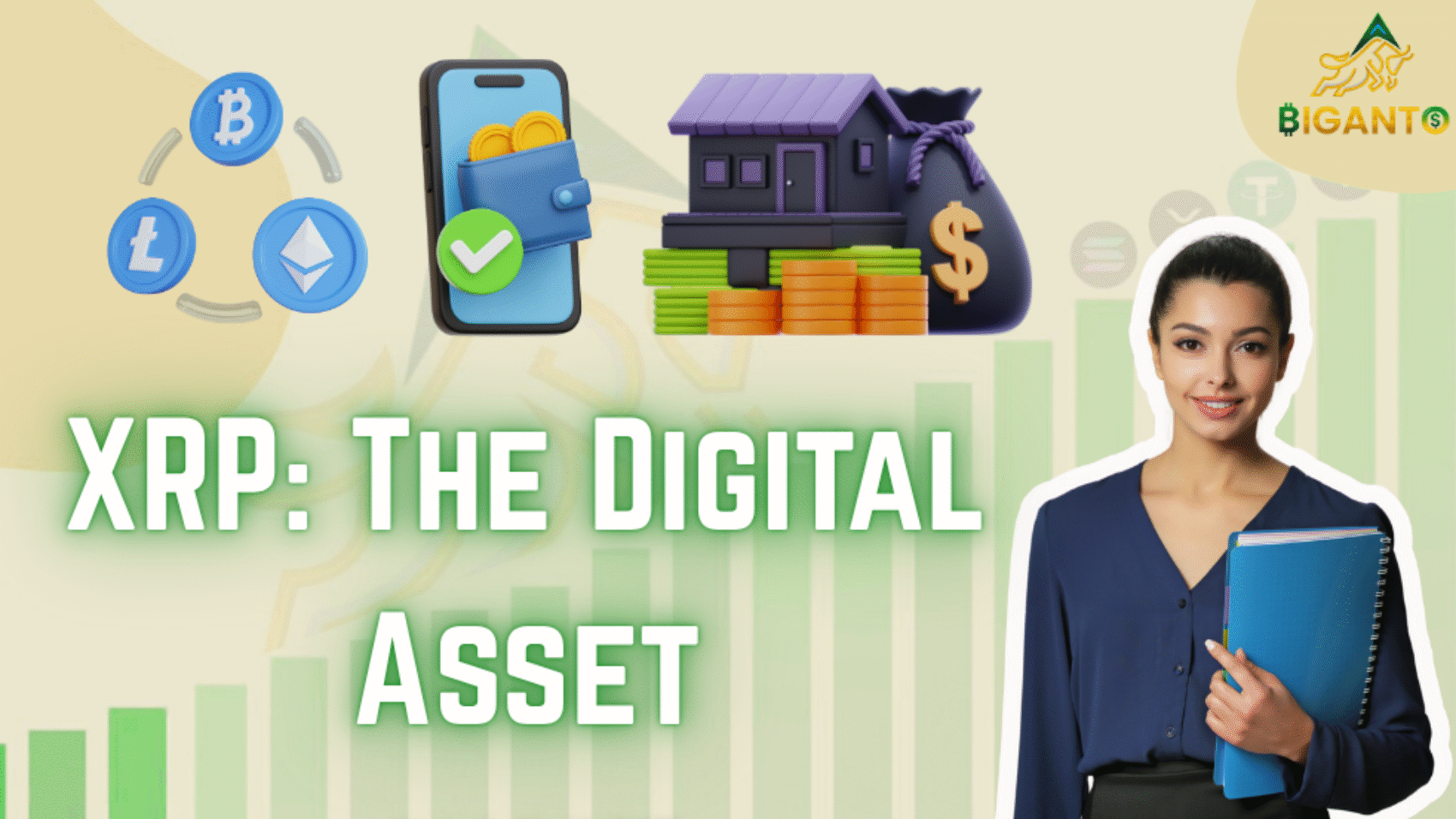XRP is a digital cryptocurrency that functions as the native token of the XRP Ledger — a decentralized, open-source blockchain network specifically designed for fast, low-cost financial transactions. Unlike Bitcoin, which relies on energy-intensive Proof of Work mining, XRP employs a unique consensus mechanism that enables transactions to be validated and settled in just 3 to 5 seconds, with minimal fees. This makes XRP particularly well-suited for use cases like international payments and remittances.
Developed by Ripple Labs, a fintech company focused on building global payment solutions, XRP is used as a bridge currency within Ripple’s ecosystem to facilitate seamless cross-border transactions. Notably, all 100 billion XRP tokens were pre-mined at the time of the network’s launch, ensuring a fixed supply and eliminating the need for ongoing mining — contributing to the network’s efficiency and predictability.
XRP’s core utility lies in its ability to streamline cross-border payments, offering a faster and more cost-effective alternative to traditional correspondent banking systems. Financial institutions can leverage XRP to source liquidity and settle transactions between different fiat currencies and jurisdictions in real time.
Are Ripple and XRP the same?
No, Ripple and XRP are not the same, but they are closely connected — and that’s why many people get confused.
Ripple is a company (Ripple Labs Inc.) that was founded in 2012. It creates payment solutions for banks and financial institutions, helping them send money across borders faster and cheaper. Ripple is like a tech company with offices, employees, and software products like RippleNet, which helps banks move money globally.
XRP, on the other hand, is a digital cryptocurrency that runs on its own blockchain called the XRP Ledger. XRP is used to make fast and low-cost transactions, especially useful for sending money between different countries and currencies. It works like a bridge between two currencies in international payments.
The confusion happens because Ripple created XRP and still holds a large amount of XRP tokens. Ripple also uses XRP in some of its products, but XRP can work on its own, even without Ripple the company. Anyone can use, trade, or build on the XRP Ledger — it’s open and decentralized.
This difference became very important during a lawsuit by the SEC, where the big question was: Is XRP just a token Ripple sells, or is it a separate digital asset that works independently? This legal case is still ongoing, but it made many people realize how important it is to understand the difference between Ripple (the company) and XRP (the cryptocurrency).
XRP’s Legal Battle: Ripple vs. SEC
One of the most significant factors influencing XRP’s trajectory has been the ongoing legal battle between Ripple Labs and the U.S. Securities and Exchange Commission (SEC). The SEC filed a lawsuit in December 2020, alleging that Ripple conducted an unregistered securities offering by selling XRP tokens.
One of the biggest factors affecting XRP’s journey has been the ongoing legal battle between Ripple Labs and the U.S. Securities and Exchange Commission (SEC). In December 2020, the SEC sued Ripple, claiming the company had conducted an unregistered securities offering by selling XRP tokens.
A key development came in 2023, when the court ruled that Ripple’s programmatic sales of XRP to retail investors (i.e., regular people buying on exchanges) did not violate securities laws. However, direct sales to institutional investors were considered securities offerings, meaning Ripple did breach some regulations. This was seen as a partial win for Ripple and brought some much-needed regulatory clarity to XRP’s status in the U.S.
But the case isn’t over yet.
In 2024, the legal process took another twist when Judge Analisa Torres rejected a joint settlement motion, citing procedural issues. This has delayed the final outcome, keeping some uncertainty in the market.
Despite the ongoing court drama, the case is being closely watched by the entire crypto industry, as its final ruling could set a major legal precedent for how digital assets are classified and regulated in the U.S.
How XRP Works: Technology and Real-World Use Cases
The Technology Behind XRP
XRP runs on its own blockchain called the XRP Ledger (XRPL). Unlike Bitcoin or Ethereum, which use energy-heavy systems like Proof of Work (PoW) or Proof of Stake (PoS) to validate transactions, the XRP Ledger uses a unique consensus protocol.
Here’s how it works in simple terms:
- Instead of miners or stakers, XRP relies on a group of trusted validators called the Unique Node List (UNL).
- These validators quickly agree on which transactions are valid.
- Because of this system, transactions on the XRP Ledger are confirmed in just 3 to 5 seconds.
- The fees are extremely low — usually less than a penny.
- It’s also eco-friendly, as it uses very little energy compared to Bitcoin.
The XRP Ledger is highly scalable and can process around 1,500 transactions per second (TPS). And with features like payment channels, it has the potential to scale into the tens of thousands of TPS, making it one of the most efficient blockchains out there.
Key Use Cases
1. Central Bank Digital Currencies (CBDCs)
Ripple is also working with several governments and central banks to help develop their own digital currencies (CBDCs).
By using Ripple’s technology — and potentially XRP as a bridge asset — these CBDCs can:
- Work together easily (interoperability),
- Settle instantly, and
- Reduce global transfer costs.
2. Micropayments
Thanks to XRP’s low fees and fast processing, it’s also great for small payments — like:
- Paying a few cents to read an online article,
- Tipping digital creators,
- Or enabling pay-per-use services.
Traditional systems charge too much for small transactions, but XRP makes them affordable.
3. Cross-Border Payments
This is the main use case of XRP and what it’s best known for.
- Normally, sending money from one country to another is slow and costly.
- It often involves multiple banks, high fees, and takes days to settle.
- XRP solves this by acting as a “bridge currency.”
For example, if a bank wants to send money from India to Mexico:
- It can convert Indian Rupees (INR) to XRP,
- Send XRP across the XRP Ledger,
- And instantly convert it to Mexican Pesos (MXN) on the other side.
This reduces time, cost, and friction — and several companies like Travelex Bank and Lulu Exchange already use XRP-based systems for fast and affordable international transfers.
Future Outlook:
The future outlook for XRP is a subject of much debate and speculation. Bullish analysts foresee significant price appreciation, driven by:
1. Growing Institutional Interest
As traditional financial institutions become more open to digital assets, XRP is well-positioned to benefit — especially if there’s talk of a U.S.-based spot XRP ETF in the future. Such a development could:
- Attract large-scale capital inflows,
- Increase mainstream awareness, and
- Strengthen XRP’s position in the institutional crypto space.
2. Resolution of the SEC Lawsuit
A final and favorable ruling in the ongoing SEC lawsuit would be a game-changer for XRP. It could:
- Clear the regulatory uncertainty that has hung over XRP for years,
- Lead to relisting on major U.S. exchanges, and
- Boost institutional confidence, making it easier for banks and big investors to adopt XRP.
Many in the crypto community believe that once the case is resolved, XRP’s true potential could be unleashed.
3. Ripple’s Expanding Global Network
Ripple continues to build strategic partnerships with banks, fintech firms, and central banks around the world. Its cross-border payment solutions are already being used in various countries.
This steady expansion of Ripple’s network:
- Increases real-world demand for XRP, and
- Enhances XRP’s utility as a liquidity bridge in international transactions.
The more Ripple grows, the more XRP stands to gain.
Conclusion
XRP, as a digital asset, is specifically engineered for efficient global financial transfers, offering speed, low cost, and energy efficiency. Its primary use case lies in facilitating cross-border payments and providing on-demand liquidity for financial institutions. At the same time, Ripple’s expanding partnerships with banks, central banks, and payment providers around the world point to a growing ecosystem where XRP could serve as a key liquidity tool. Combine that with rising institutional interest and potential tailwinds from a broader crypto bull market — and XRP could be on the verge of a major breakout.While no investment is without risk, XRP offers a unique blend of technology, utility, and real-world adoption potential that few other cryptocurrencies can match

